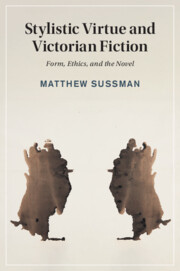Book contents
- Stylistic Virtue and Victorian Fiction
- Cambridge Studies In Nineteenth-Century Literature And Culture
- Stylistic Virtue and Victorian Fiction
- Copyright page
- Contents
- Illustrations
- Acknowledgments
- Introduction What Is Stylistic Virtue?
- Chapter 1 Stylistic Virtue and the Rise of Literary Formalism
- Chapter 2 Stylistic Virtue between Moralism and Aestheticism
- Chapter 3 Virtue Theory and the Nature of the Aesthetic
- Chapter 4 Thackeray’s Grace
- Chapter 5 Trollope’s Ease and Lucidity
- Chapter 6 Meredith’s Fervidness
- Afterword Stylistic Virtue and Literary Value
- Notes
- Bibliography
- Index
- Cambridge Studies In Nineteenth-Century Literature And Culture
Chapter 5 - Trollope’s Ease and Lucidity
Published online by Cambridge University Press: 11 June 2021
- Stylistic Virtue and Victorian Fiction
- Cambridge Studies In Nineteenth-Century Literature And Culture
- Stylistic Virtue and Victorian Fiction
- Copyright page
- Contents
- Illustrations
- Acknowledgments
- Introduction What Is Stylistic Virtue?
- Chapter 1 Stylistic Virtue and the Rise of Literary Formalism
- Chapter 2 Stylistic Virtue between Moralism and Aestheticism
- Chapter 3 Virtue Theory and the Nature of the Aesthetic
- Chapter 4 Thackeray’s Grace
- Chapter 5 Trollope’s Ease and Lucidity
- Chapter 6 Meredith’s Fervidness
- Afterword Stylistic Virtue and Literary Value
- Notes
- Bibliography
- Index
- Cambridge Studies In Nineteenth-Century Literature And Culture
Summary
Of all Victorian authors, Trollope comes closest to aspiring to the “degree zero” style that has played such an important role in modern theorizations of prose. Committed to an ideal of stylistic transparency, Trollope sought the unmediated transmission of authorial thought-content, borrowing from the more psychological strains of belletrism. However, Chapter 5 challenges the moralization of Trollope’s “disappearing” style as honest or forthright by cataloguing the acts of formal deception necessary to render such effects. Moreover, Trollope’s writings on style reveal his interest in non-mimetic features of prose such as harmony and rhythm, challenging “ease” and “lucidity” as preeminent realist virtues. The chapter concludes that Trollope’s blend of Attic simplicity with Ciceronian schemes proves his style to be one of the most artfully mannered in Victorian English, creating an impression of aesthetic virtuosity where many critics have seen only functional pedestrianism.
Keywords
- Type
- Chapter
- Information
- Stylistic Virtue and Victorian FictionForm, Ethics, and the Novel, pp. 124 - 143Publisher: Cambridge University PressPrint publication year: 2021

